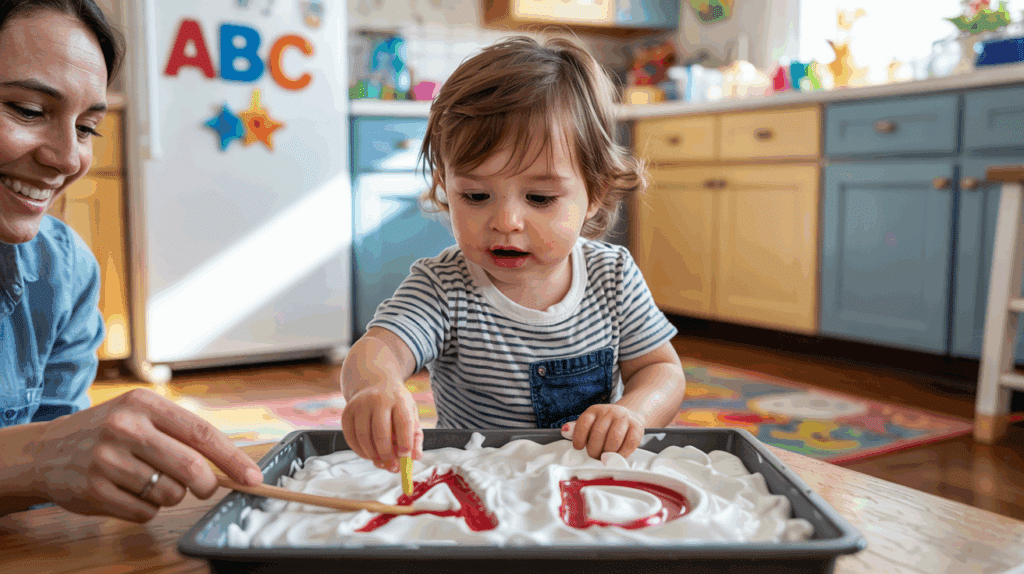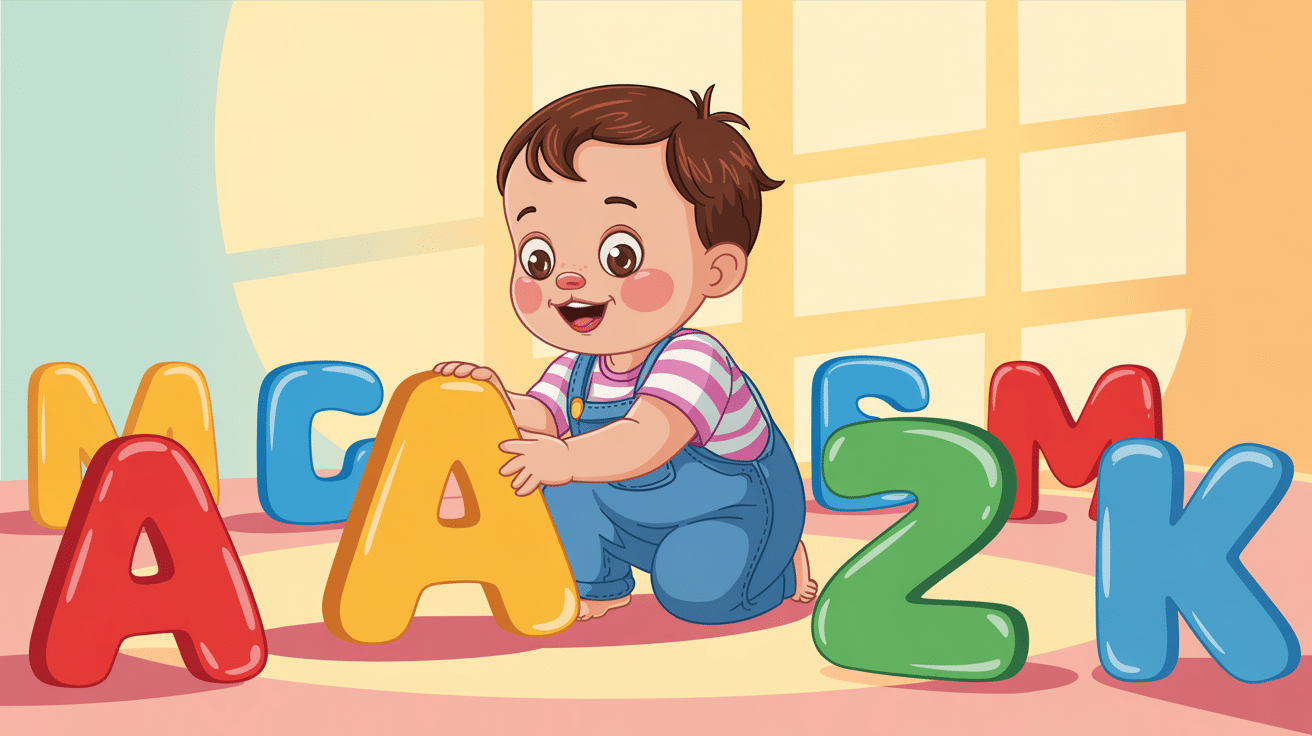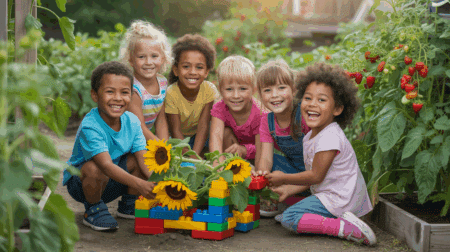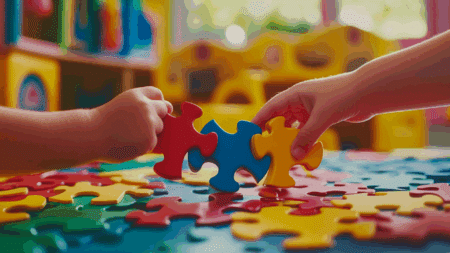As a parent, you might find yourself asking, “How many letters should a 2-year-old actually know?” It’s a common concern, but here’s the thing: every child develops at their own pace.
So, take a deep breath. It’s completely normal if your toddler isn’t mastering the alphabet just yet.
In this guide, I’ll walk you through what early reading looks like for 2-year-olds, sharing practical tips, fun activities, and some reassuring advice.
If your little one is starting to recognize a few letters or not showing much interest yet, this post will give you the tools and confidence to support their progress. Let’s look at the world of early reading together!
Understanding How Many Letters a 2-Year-Old Knows
Many people agree that 2-year-olds are not expected to have mastered the entire alphabet. At this stage, children are building foundational language skills that will support future reading abilities.
Most toddlers can recognize between 1-5 letters, typically starting with the letters in their own name or frequently seen letters like “M” for mom or “D” for dad.
Each child’s learning path differs significantly. Some children show more interest in letters earlier, while others focus on different developmental areas.
The key is creating a supportive and engaging environment that sparks curiosity about letters and language.
Pre-Reading Skills for Toddlers
Building pre-reading skills goes beyond letter recognition. Expose your child to rich language experiences through:
- Singing alphabet songs: These help your child become familiar with letter sounds in a fun and musical way.
- Reading picture books together: This is a great way to show your child how words and pictures work together to tell a story.
- Playing sound-matching games: These games help your child connect sounds with letters, which is a key step in learning to read.
- Pointing out letters in everyday environments: From signs to labels on products, pointing out letters all around you helps your toddler make connections between letters and the world.
These activities help your toddler develop phonemic awareness and build connections between spoken and written language. Make learning fun and interactive, avoiding any pressure or stress.
Turn Letter Learning into Playful Experiences for a 2-Year-Old

Making letter learning fun and interactive is key to keeping your toddler engaged. Here are some creative ways to introduce letters through play.
- Use magnetic letters on the refrigerator: Stick magnetic letters on your fridge or any metal surface. Let your toddler play with them while you talk about the sounds and shapes of the letters.
You can even challenge them to find specific letters or spell out their name with the magnets. - Draw letters in sand or shaving cream: Spread a thin layer of sand or shaving cream on a table or tray. Allow your child to trace letters with their finger.
This sensory activity can help them remember letter shapes and sounds while engaging their senses of touch and sight. - Create letter-matching games: Make a simple matching game using cards with letters and pictures. For example, one card could have the letter “A,” and another could have an apple.
Ask your child to match the letter with the picture. You can also do this with toys or objects around the house, such as matching the letter “D” to a doll. - Practice tracing simple letter shapes: Draw large letters on paper and let your toddler trace them with crayons or markers.
You can even help them trace with their finger first to get used to the movements before using writing tools. This helps build fine motor skills as well as letter recognition.
Cognitive and Communication Milestones
Two-year-olds are remarkable problem-solvers, developing critical communication skills. Their cognitive growth includes:
- Improving hand-eye coordination
- Expanding vocabulary
- Understanding simple instructions
- Connecting words with objects
These skills form the foundation for future reading and writing abilities. Remember that language development looks different for each child.
Screen Time and Learning for 2-Year-Olds
Educational technology can support early learning when used mindfully. To make the most of screen time, it’s important to choose age-appropriate apps that are designed for toddlers.
Limiting screen time to 30-45 minutes daily helps ensure that your child has a balanced routine with plenty of time for other activities.
Watching educational content together is a great way to engage your child and make the experience more interactive.
Look for programs that encourage active participation, such as those that feature interactive letter recognition and phonetic learning.
These types of programs help your child connect sounds with letters, making the learning experience more meaningful and fun.
When to Seek Professional Guidance
Trust your parental instincts. Consider consulting a pediatrician if you notice:
- Limited verbal communication: If your child is not using many words by the age of 2, it might be helpful to check in with a professional.
- Lack of interest in books or letters: If your toddler shows little interest in reading or recognizing letters, it could be a sign to seek advice.
- Significant delays in language development: If your child is falling behind in speaking, understanding, or using words, a pediatrician can provide guidance.
- Concerns about hearing or comprehension: If you suspect your child has trouble hearing or understanding words, getting a checkup can help rule out any issues.
Most developmental variations are normal, but professional guidance can provide personalized insights.
Best Books for Pre-Reading
Select books that capture your toddler’s imagination:
- Alphabet books with colorful illustrations
- Interactive books with tactile elements
- Rhyming stories
- Books featuring familiar objects
Reading together creates bonding moments and supports language development. Choose books that make your child laugh and want to engage.
Conclusion
Every child learns at their own pace, and that’s what makes this time so special. Remember, it’s not about how many letters your child knows right now, but about enjoying the little moments of learning together.
Celebrate each step they take, even if it’s just recognizing a few letters or enjoying a picture book. You’re helping build the foundation for their future skills. Keep things fun and relaxed, read together, sing songs, and play simple games.
If you’re ever unsure, don’t hesitate to reach out for help. And don’t forget, there’s always more to learn on this topic.
Check out other blogs for more tips and ideas to keep your child’s learning going strong!




